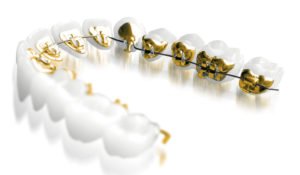Adult braces – here’s what you need to know

Braces have long been associated with teenagers and train tracks, but in the last decade that’s all changed. Thanks to a growing demand for straight teeth among adults, manufacturers have honed in on a lucrative new market. The result: braces are more effective, comfortable and discreet than ever before.
Age is no barrier when it comes to straightening teeth, and we treat hundreds of adults at Sensu every year. The results can be fantastic – whether you’re aged 14 or 40 – but before you follow suit, it’s important to do your research.
Adult braces aren’t available on NHS
Unfortunately adults aren’t usually entitled to NHS orthodontic treatment, although it can be approved on a case-by-case basis if treatment is needed for health reasons. Because of limited NHS funding, even under 18s need to be assessed to determine whether they qualify for free NHS treatment.
In most cases, adult braces are required for cosmetic reasons and treatment will need to be self funded. Here at Sensu we provide interest-free payment plans so you can break up the cost of your treatment into monthly instalments.
Straight teeth don’t just look good
Straightening teeth isn’t just about improving their appearance. It can also be beneficial to your oral health. Crowded teeth provide food with lots of crevices to hide in, which can make brushing and flossing more of a challenge.
If food is left to fester for extended periods of time, eventually this can lead to decay and acid erosion. Similarly, if you’re not brushing your gums thoroughly they’ll be more at risk of bleeding and inflammation. Worst case scenario, this could lead to bone recession and even tooth loss.
Crowding can worsen over time
As you age your teeth will have a natural tendency to crowd towards the front of your mouth, creating a narrow smile. Perhaps surprisingly, your wisdom teeth aren’t responsible for this crowding and there are various factors that can influence this movement, including a loss of jaw bone density as you age.
Thankfully braces can help to reverse the process and retainers will help to prevent any further movement. If you have started to experience some mild crowding it’s always a good idea to get a professional opinion early on. There are some braces that are specially designed to treat these cases quickly and conveniently.
You don’t have to wear train tracks
You’ll be pleased to hear that metal train track braces aren’t the only way we can straighten teeth. Invisalign is a hugely popular clear brace that’s removable and virtually invisible. It straightens teeth using a series of custom-made aligners, each one moving your teeth little-by-little.
We can even fit braces behind your teeth. Lingual braces resemble traditional train track braces but they are fitted to the inside (lingual) surface of your teeth. They’re the most discreet option for image-conscious adults. They do require a high level of skill though, so you can expect to pay a bit more for a hidden brace.

You might develop a lisp
If you do opt for clear aligners or lingual braces, you might develop a slight lisp. Don’t worry, this should disappear within a few days, but it’s worth making sure you don’t have your brace fitted just before an important meeting or social occasion.
You may also find that your teeth feel a little tender for the first few days, this is completely normal and a mild painkiller should help. Ultimately braces shouldn’t be painful, but there could be some mild discomfort just after your brace has been fitted and following any adjustments.
You’ll need to wear a retainer
Orthodontic relapse is a big problem and we see a lot of adults whose teeth have moved after wearing braces when they were younger. The reason: they stopped wearing a retainer. Once we take your brace off, there’s a high risk of your teeth moving back to where they started. This is because elastic fibres, which are stretched during orthodontic treatment, continue to put pressure on your teeth for months and years afterwards.
There are two types of retainer available, which are both designed to stop your teeth from moving. Removable retainers are clear, vacuum-formed aligners that are made to snugly fit your teeth, holding them in position. Most patients will only need to wear their removable retainers at night.
Fixed retainers consist of a thin stainless steel wire that we attach behind your teeth indefinitely, to provide an effective long-term solution to orthodontic relapse.
Hopefully this article helps to give you an idea of what you can expect from adult orthodontics. Braces are unlikely to be appealing at any age, but the results more than make up for the journey. To find out more, book your free no-obligation consultation.



